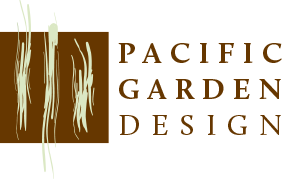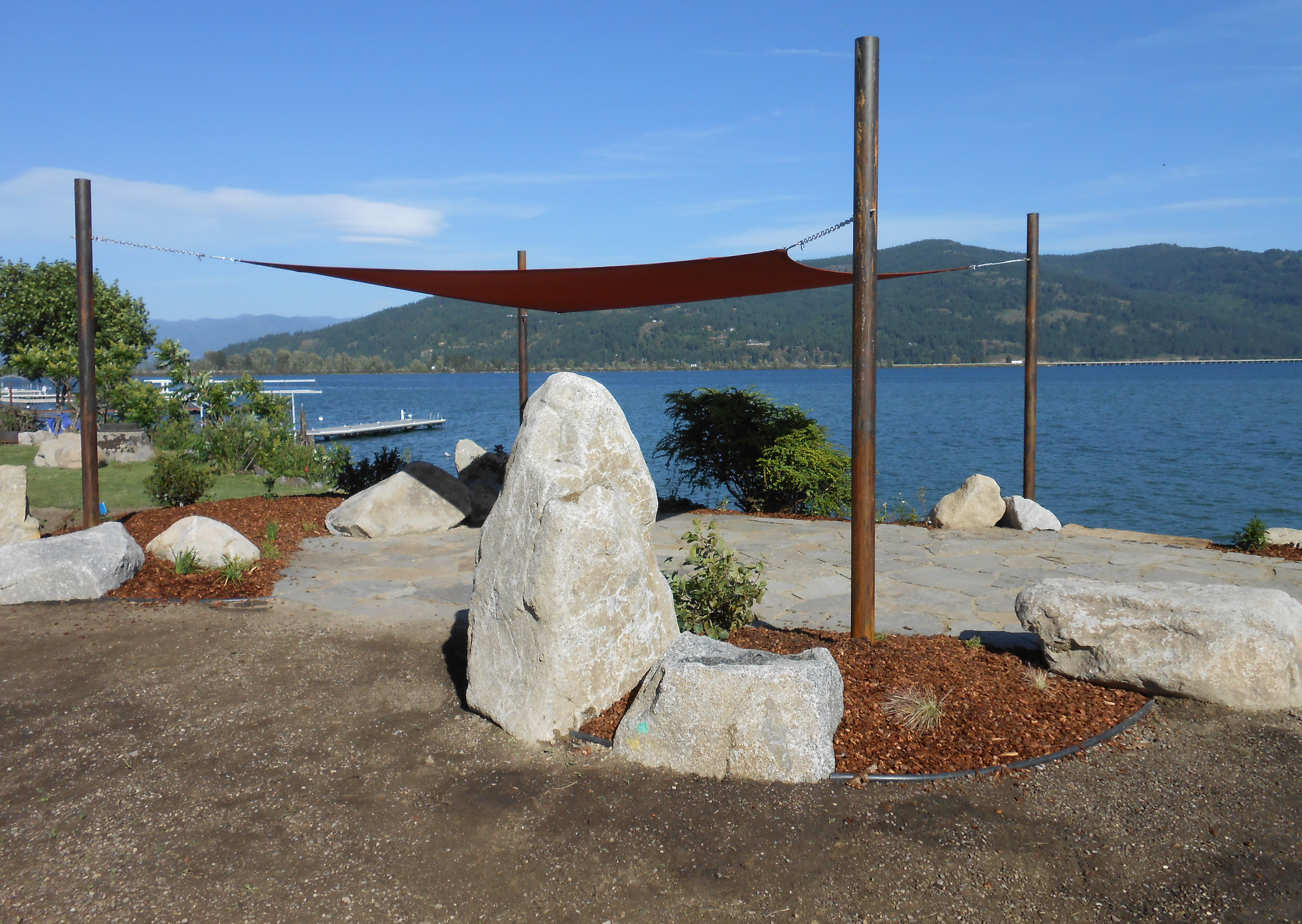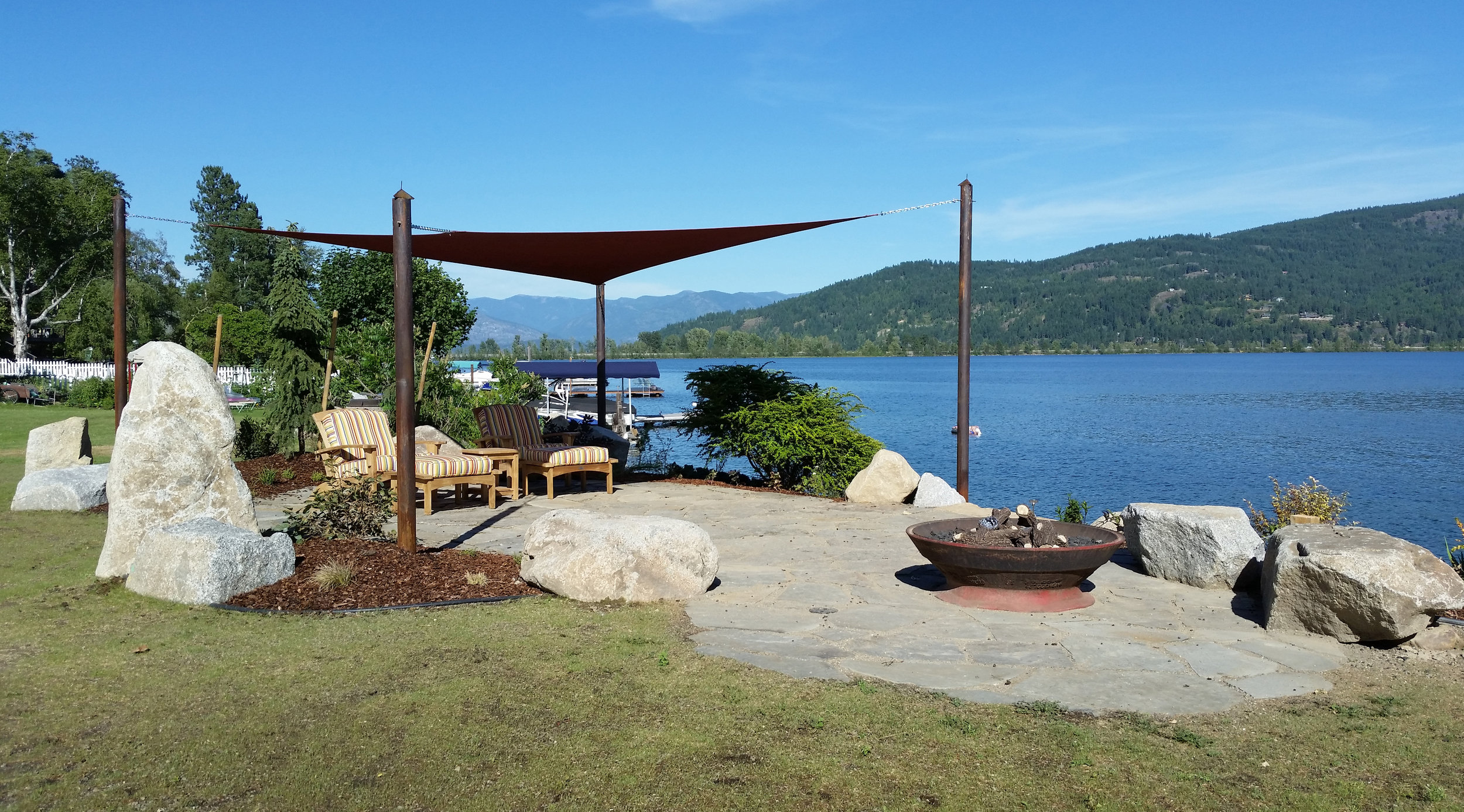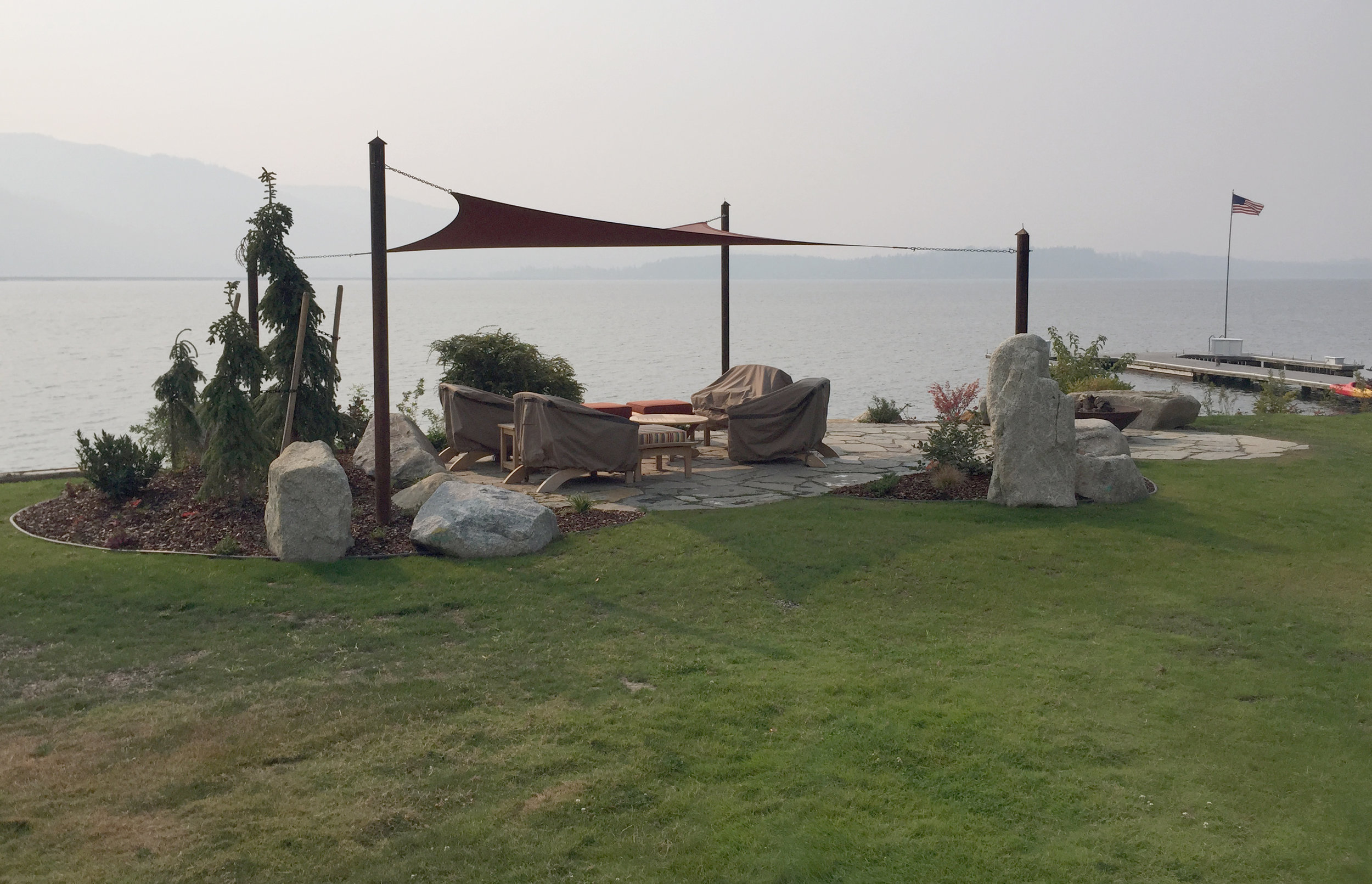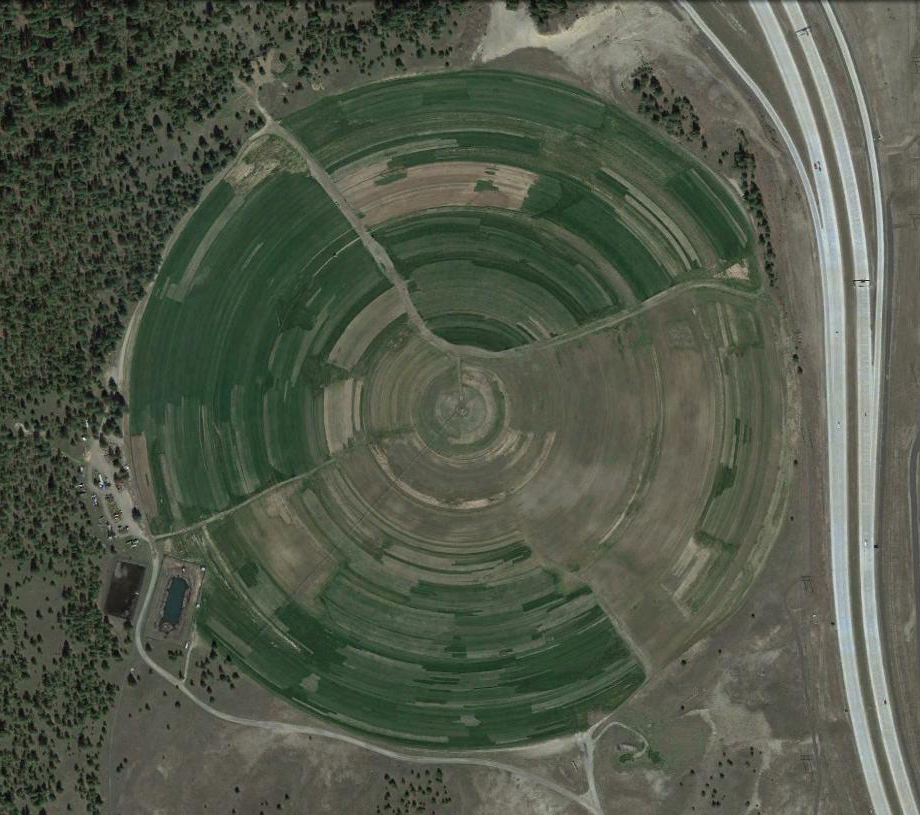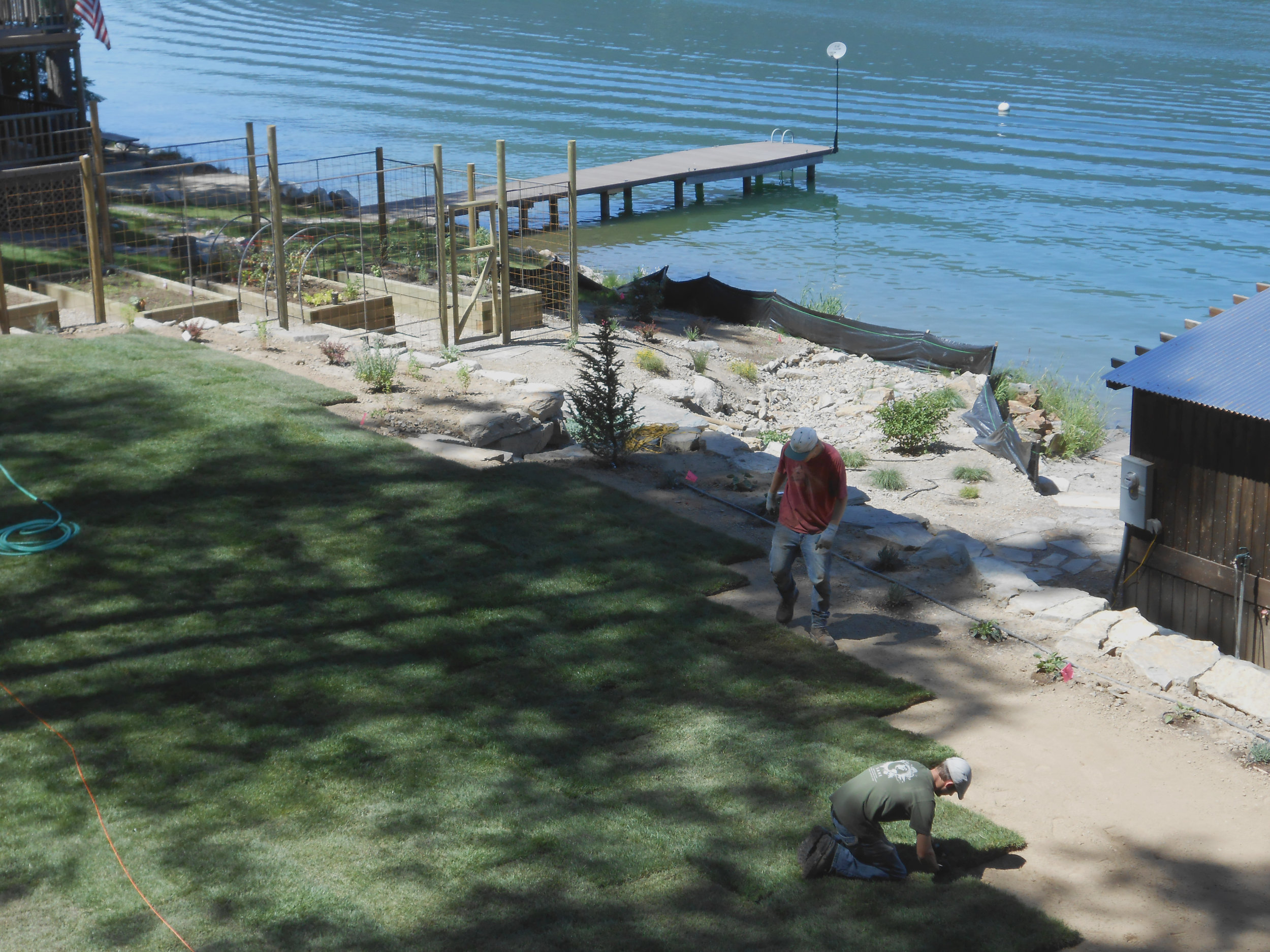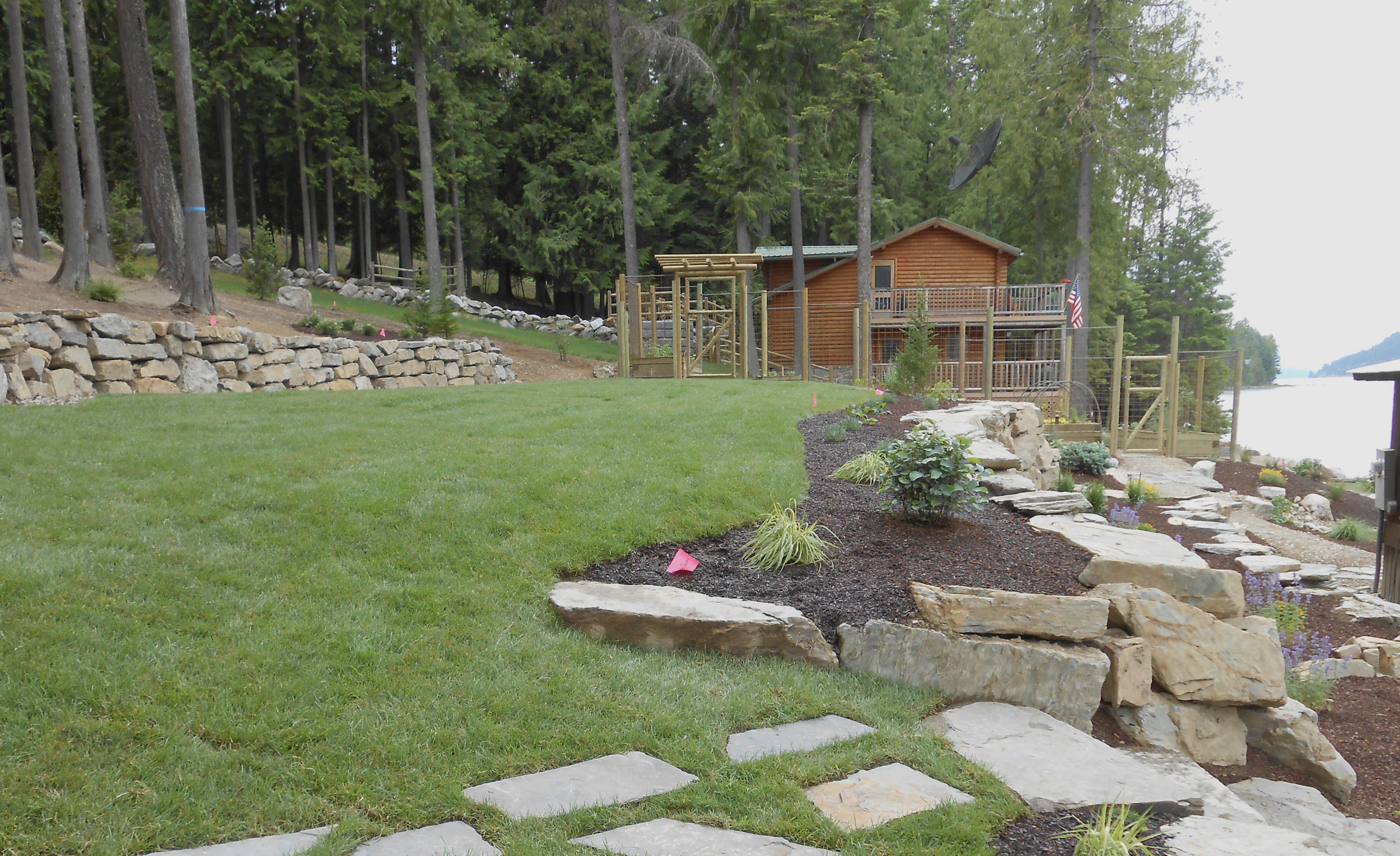2. Identify the Trunk Flare
The trunk flare is the point at which the tree trunk transitions to the root system. The trunk flare should sit right at the surface of the earth after the tree is planted. Burying a tree too deeply can suffocate the tree, create problems with fungus and pests, and lead to a poorly developed root system. Most species of trees have a clear curve leading to the roots, but for those without, the trunk flare should be considered to be the point above the highest root on the trunk. Trees from the nursery sometimes have their trunk flares buried too deep, so some excavation might be necessary.
3. Dig a Wide Hole
A tree’s roots travel outward much more than they do downward. Dig a hole three times as wide as the root ball, but only as deep as the bottom of the root ball to the trunk flare. After you backfill the hole, the roots will have wide ring of uncompacted soil to grow into.
4. Remove the Tree Container
Whether it’s a plastic pot, burlap, or wire mesh and plastic, remove any material containing the root ball. For very large balled and burlap trees, it may be difficult to remove the entire covering. In that case, cut the metal cage to remove the sides and remove as much burlap as possible. The roots will grow laterally and should not be constrained by the remaining material.
It is especially important, however, to remove any synthetic twine or burlap, as these materials will not degrade underground and will strangle the growing tree. Twine around the trunk can rapidly girdle the tree, cutting off its transport of water, air, and nutrients, and leading to the decline and death of the tree.
Container-grown trees may have circling roots or other root problems. Making few vertical slices and spreading out the roots as much as possible will help the roots grow naturally and vigorously.
5. Place the Tree in the Hole
After preparing the root ball, place the tree in the hole so that the trunk flare will sit a couple inches above ground level. It is better to have the root flare a bit too high than for it to be buried. This will also allow for some settling of the tree in the soil. Spread the roots out in the hole as much as possible.
6. Straighten the Tree
After the tree is settled in its hole, view the tree from several directions to make sure the trunk is straight and vertical. Add soil underneath the root ball to support the tree as necessary. For multi-stemmed trees, consider where the tree will be viewed from and focus on the overall balance of the branches from those points.
7. Fill the Hole
When the tree has been positioned well, start backfilling the hole gently, making sure not to damage the roots. To help settle the soil evenly, fill the hole a few inches at a time, soaking the soil with water as you go. This will eliminate air pockets in the soil, which can dry out roots and settle unexpectedly in the future.
8. Stake the Tree if Necessary
Not only do most trees do not need staking after they’re planted, it can be detrimental to their overall vigor. On windy sites, however, or if the tree is in a location that could see damage from lawnmowers or vandalism, protective staking may be warranted. If staking is considered necessary, make sure to remove the stakes within the first year of growth to avoid long-term damage to the tree.
